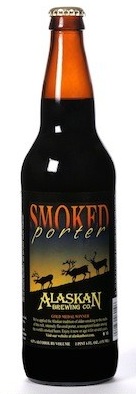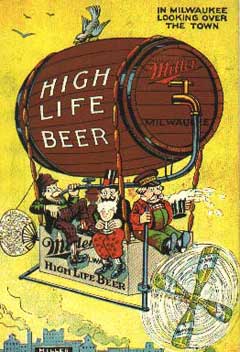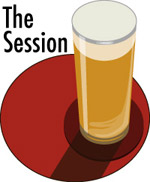 Alaskan Brewing co-founder Geoff Larson tells a good story. One you want to listen sitting next to a roaring fire on a Juneau beach.
Alaskan Brewing co-founder Geoff Larson tells a good story. One you want to listen sitting next to a roaring fire on a Juneau beach.
Like the one about what he learned not long after Alaskan brewed its Smoked Porter for the first time in 1988; a beer that recently won its twentieth medal at the Great American Beer Festival.
Larson smoked the malt he used in Smoked Porter at Taku Smokeries, at the time located across the road from the brewery (Taku since moved to a bigger plant and Alaskan bought the old facility, using it smoke malt for the once-a-year release). He had a few reservations going in, most notably about fish oils somehow ending up in the beer, changing the aroma and killing the head. Those concerns disappeared when he tasted the beers and it sold out in a matter of weeks, then . . .
A customer told Larson the beer tasted of salmon. “I took it inappropriately and defensively,” he said, measuring his words and making it clear how bothered he was. It was months later before he had a conversation with the late Greg Noonan of Vermont Pub & Brewery about Noonan’s version of smoked porter that he learned something important about aroma and memory.
“Greg talked about first using hickory and customers would ask if he put hickory smoked ham in the beer,” Larson said. “Then he used maple and they asked, ‘Hey, did you start throwing sausage in your beer?'”
Larson began to understand the powerful memories smoke evokes. He realized it wasn’t salmon that drinker noticed but the alder wood both the malt and fish were smoked over. In Southeast Alaska smoke from alder wood conjures up memories of campfires and smoked salmon, while elsewhere maple smoke reminds consumers of Jimmy Dean Sausage.
(And in the upper Franconian region of Germany where beechwood is used to smoke pork as well as malt to brew the local rauchbier some drinkers describe the more intense of these beers as “liquid bacon.”)
“One smoked malt is not the same as another smoked malt. You can taste the difference between woods,” Larson said.
Last week Alaskan released the 23rd vintage of Smoked Porter. Alaskan doesn’t sell beer in Missouri, so we opened a 2009 bottle we bought a couple of years ago in Arizona.
Still smoky, from the start to the finish. But for us, the real pleasure? It smelled just like Alaska.
 Alaskan Brewing co-founder Geoff Larson tells a good story. One you want to listen sitting next to a roaring fire on a Juneau beach.
Alaskan Brewing co-founder Geoff Larson tells a good story. One you want to listen sitting next to a roaring fire on a Juneau beach. If you could climb into a machine that would take you to any time and place, what beer related destination would you pick?
If you could climb into a machine that would take you to any time and place, what beer related destination would you pick? This month’s Session is hosted by Steve Lamond at
This month’s Session is hosted by Steve Lamond at